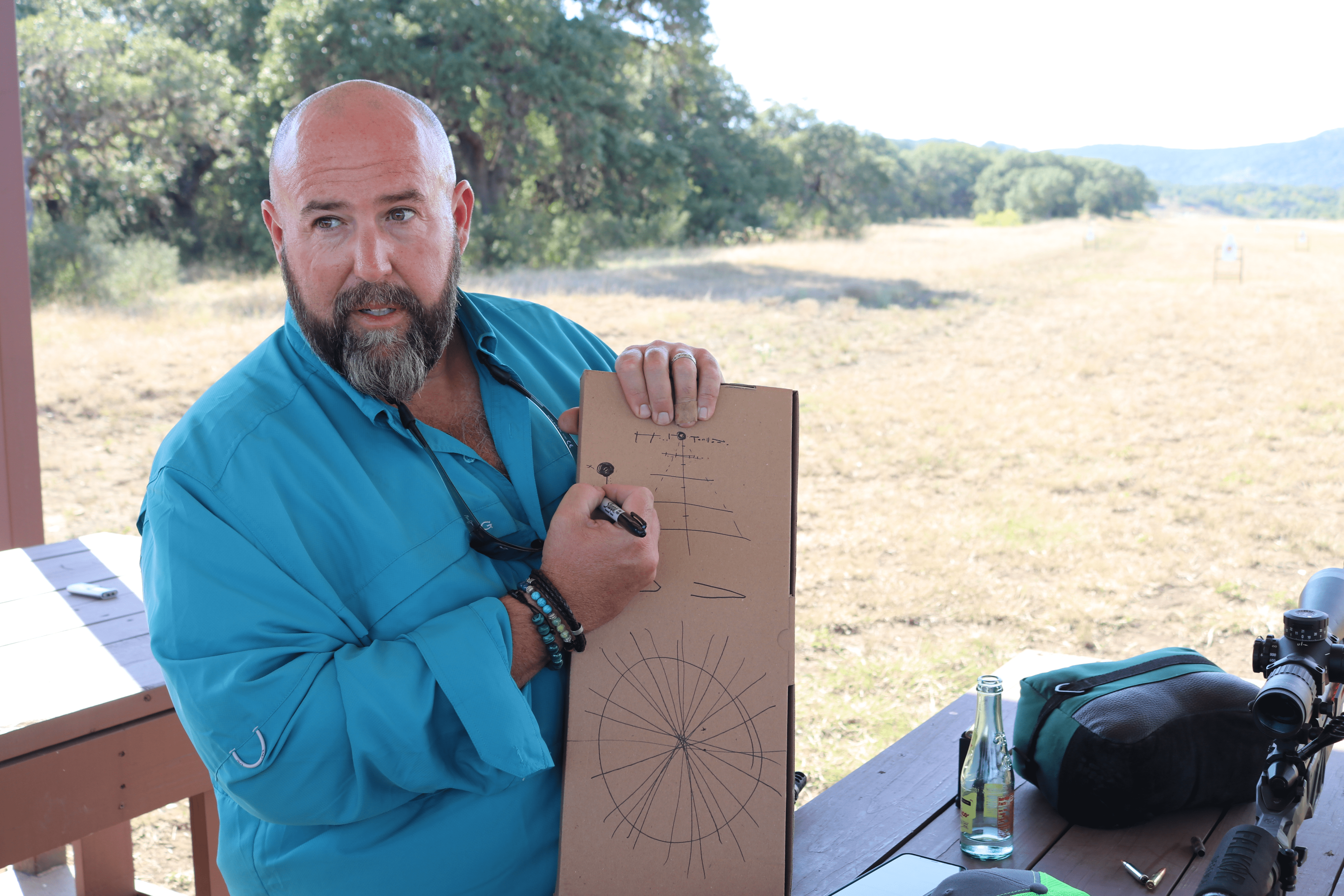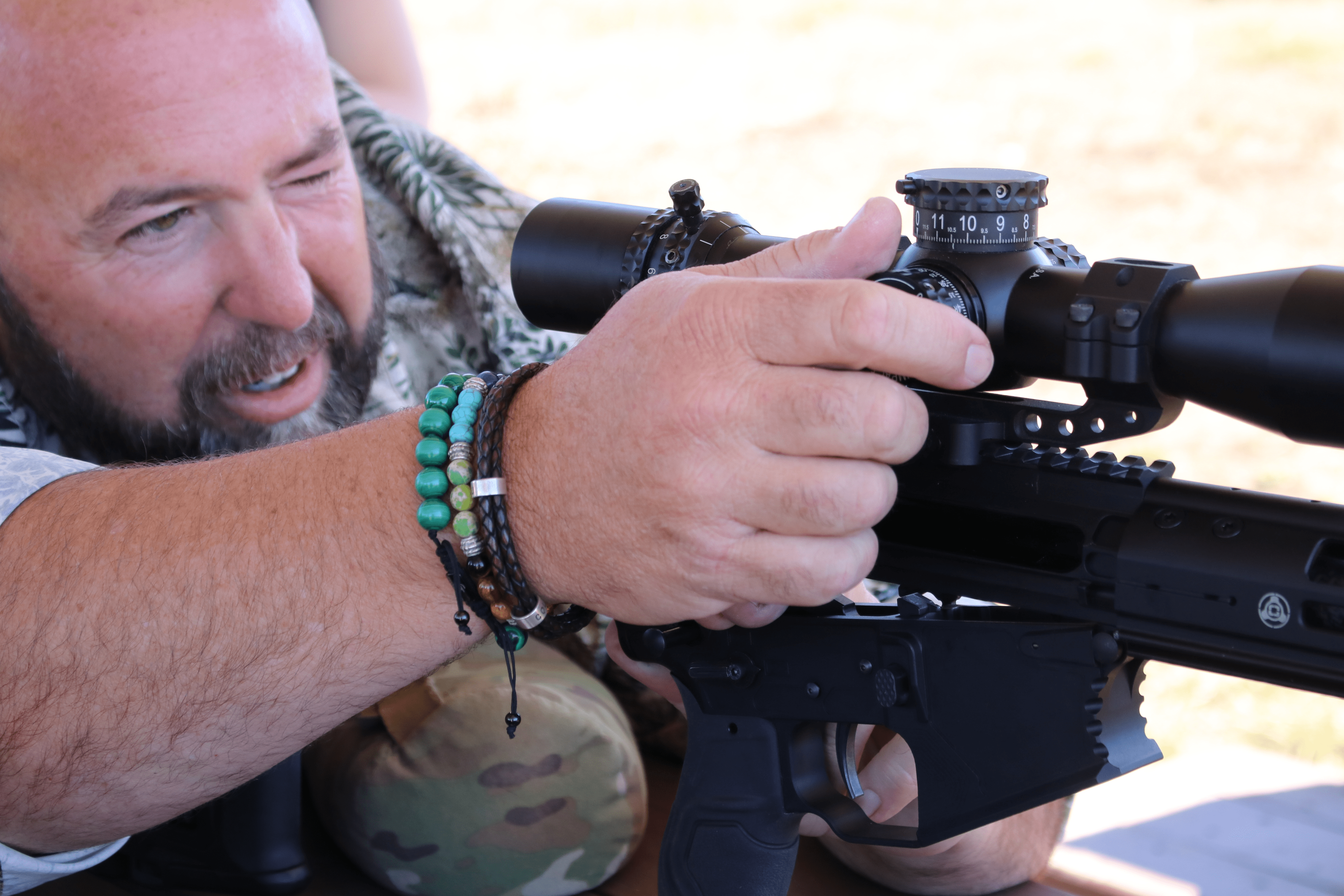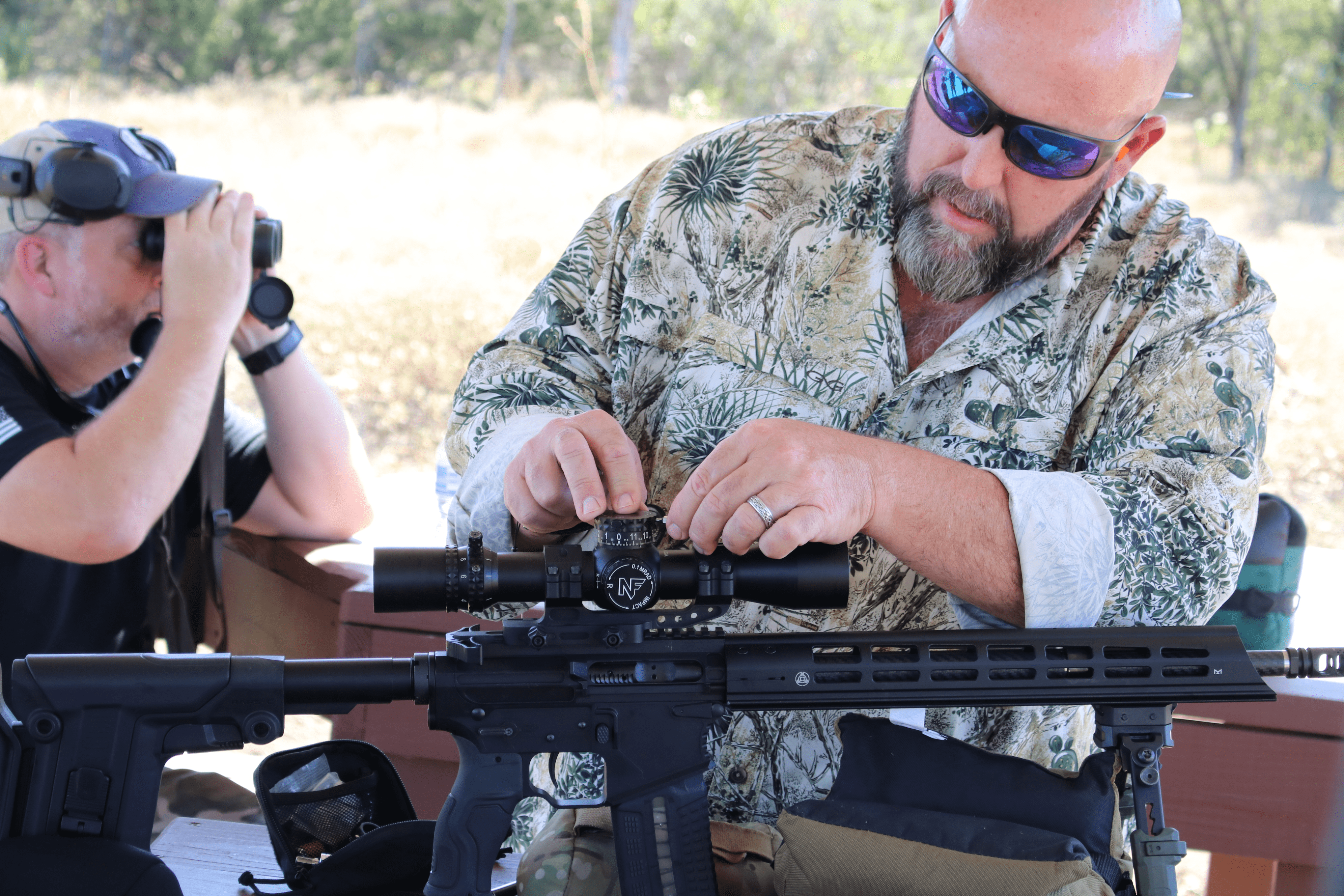Long-range shooting is one of the most difficult disciplines in shooting sports. It challenges not only your basic marksmanship skills but also how well you understand your equipment and ballistics. Plus, it can be ridiculously expensive. Everything from the rifle to the optics to the ammo can cost a lot of money. On top of that, depending on where you live, it can be nearly impossible to find a long-distance range. With all those hurdles, it sounds like a totally unapproachable activity, right?![]()
Not so fast.
Long-range shooting instructor Clint Walker explained that if you want to enter the sport, you should start slow and take incremental steps towards your goals. "Long-range shooting is like learning to play the guitar," he said. "You don't start with a $3,000 guitar because you can't appreciate it. You start with a $200 guitar, and as you get better and more interested, you upgrade." In other words, don't go out and spend thousands on a rifle and gear and try to hit a 1,000-yard target on day one. That's just a formula for frustration and discouragement.
An Intro to Clint Walker
Walker took an interest in long-range shooting after starting a gun company in 2013. His company, Nemo Arms, focused primarily on developing short-barreled rifles for military and law enforcement, but after talking to some friends and clients, he learned there was a demand for an auto-loading precision rifle, specifically chambered in 300 Winchester Magnum. He thought it sounded like a fun challenge.
"But I didn't have a background in long-range shooting. I wasn't a sniper in the Army or anything like that," he said. Instead, he started working with people who sold weapons to the military and the soldiers who used them. "So, I was fortunate enough that some of the guys that we were working with were some of the best snipers in the military."
The entire time he developed his rifle, often traveling between Montana and Fort Bragg to meet with marksmen, he learned more about shooting. He started competing in long-range shooting not just because of the company he kept, but also because he wanted to improve and show off his design. "I started to compete to prove that the rifle was as capable as I said. It was in the advertising material 'run your gun, not your mouth.' It wasn't a marketing slogan. It was a way of life."
What Is Long-Range Shooting? 
Some experts define "long-range shooting" as shooting at any range where you have to make significant sight corrections to hit your target. However, Walker defined it slightly differently and made a point to differentiate long-range shooting from precision shooting, which are often used interchangeably.
"You don't have to shoot long-range to be a precision shooter," he said. With precision shooting, you're largely concerned with shot groups. The overall goal is to land three to five shots on target in a group no bigger than a quarter.
Olympic target shooting might be the best example of precision shooting. Competitors use highly specialized air rifles to shoot .22-caliber pellets at a target 30 meters away. You obviously wouldn't classify that as long-range.
And while long-range shooting could just mean hitting a target from a great distance, more often than not you are concerned with precision. Walker made it a point to separate the two disciplines because if you can't be precise at short ranges, then you definitely won't be precise at long ranges either.
What Gear Do I Need for Long-Range Shooting?

There's a common misconception that for long-range shooting, you need the best and most expensive gear. For that, Walker had another analogy. "I liken it to drag racing," he said. "At first, the car is going to be better than the driver," meaning you should buy gear that matches your level of experience.
Walker said the bare minimum that you'll need to get started in long-range shooting is a rifle, scope, and ammo. While he hesitated to say what you should pay for this, he instead suggested that you be realistic about how much things are going to cost and what you can afford.
Instead of rattling off a list of brands, he kept it simple by describing what you should look for. Specifically, he said you should look for a long-range rifle with factory options from a reputable manufacturer like Ruger or SIG SAUER, a scope with a fine target reticle (and decide if you want Mils or MOA), and factory match-grade ammo.
Walker also suggested other items that are relatively inexpensive like a ballistics app you can download on your smartphone and a shooting rest or sandbags. The application will provide information on scope adjustments. They're often programmed to consider variables like range, wind, bullet grain weight, and other load data.
How to Start Long-Range Shooting 
If you're interested in long-range shooting, Walker suggested starting at 100 yards and focusing on the fundamentals of marksmanship, learning how to use your gear, and zeroing your rifle. He also suggested taking an introductory course on marksmanship either in person or online before you start shooting.
You'll know you're ready to advance when you can consistently shoot that quarter-size group at 100 yards. Then, when you do advance, you should extend the range by 100 yards each time and stay there until you're shooting quarter-size groups. Keep advancing until you reach 1,000 yards, what Walker called a "benchmark" distance for long-range shooters.
When to Upgrade Your Shooting Gear
The best time to upgrade your gear is when it starts to feel off. "As you get better at shooting and more in tune with your gear, you'll have an easier time isolating the problem on your equipment," Walker said.
In Walker's experience, most people first think they need to upgrade their barrel, when in fact, they actually need to replace the factory trigger with a match-grade trigger. "The harder that trigger is to squeeze, the less precise it is," he said. He explained from a mechanical standpoint, factory triggers aren't always as well-polished as triggers by specialty brands.
While most budget precision rifles actually have a pretty good trigger, he said most AR platforms, which people use in lieu of a bolt-action rifle, use Mil-Spec triggers that aren't great for precision shooting. "They're absolutely atrocious," he said.
Finding Trusted Resources on Long-Distance Shooting
When you search for more information on long-range shooting, Walker suggested that you be cautious and read the full thread before accepting any advice. The reason is that the quality of the information and the sources will vary. With that said, he recommends the website Sniper's Hide, which is a dedicated forum for those interested in long-distance and precision shooting and ballistics.
He also recommends organizations like Precision Rifle Series. And last but not least, he recommends talking to shooters involved in local precision matches since that's the most likely place you'll compete.
For more information on gear and shooting, check out our library of How-To Guides.





















